Last updated on March 24th, 2024
Second shooter photography is an amazing way to advance as a photographer. Are you a budding wedding photographer or looking to become a master portrait photography? In wedding photography, there’s a lot of competition. But if you lean in and network with other wedding photographers or other professional photographer niches, you’ll find that they’re happy to take on a second photographer.
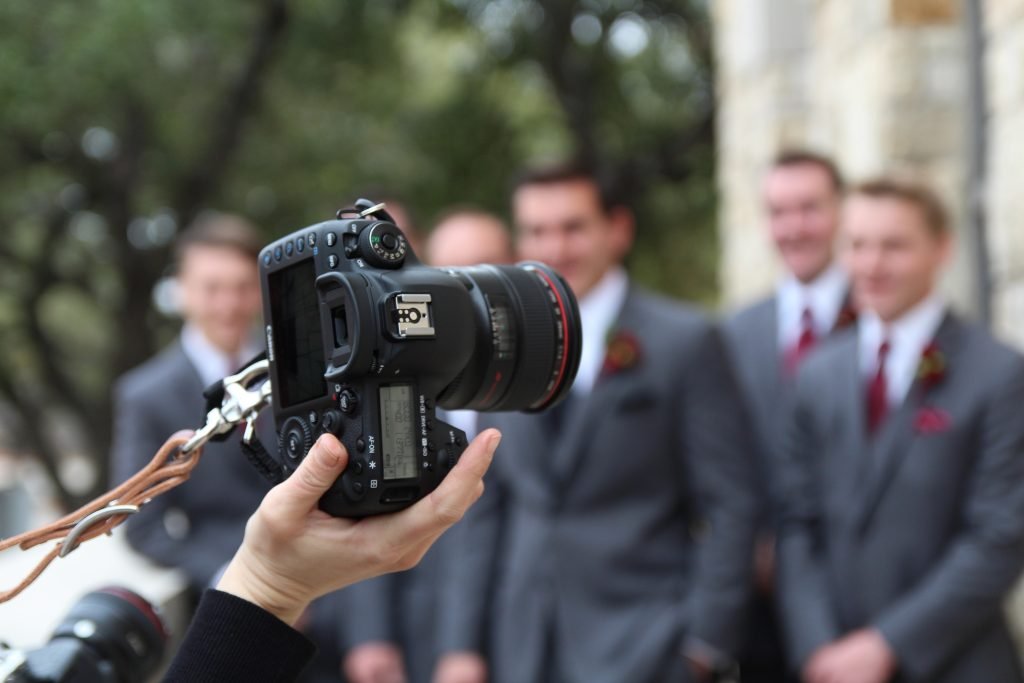
The role of a second shooter is both pivotal and transformative, offering unique perspectives that enrich photography sessions, especially weddings.
Key Takeaways
Second-shooter photography is vital for aspiring photographers to gain confidence and experience as they progress in their fledging professional careers.
- Second shooters act as assistants to the main photographer, ensuring comprehensive coverage of the wedding
- To gain experience, network with established photographers, learn technical and business skills, and build your portfolio
- Success as a second shooter depends on clear communication and adaptability
- Ethical practices, professionalism, and ongoing learning are essential for advancement to lead photographer roles
This guide aims to equip aspiring photographers with essential knowledge, tips, and strategies for excelling in second-shooter photography. Read on as you learn to become a professional photographer through he act of second shooting.
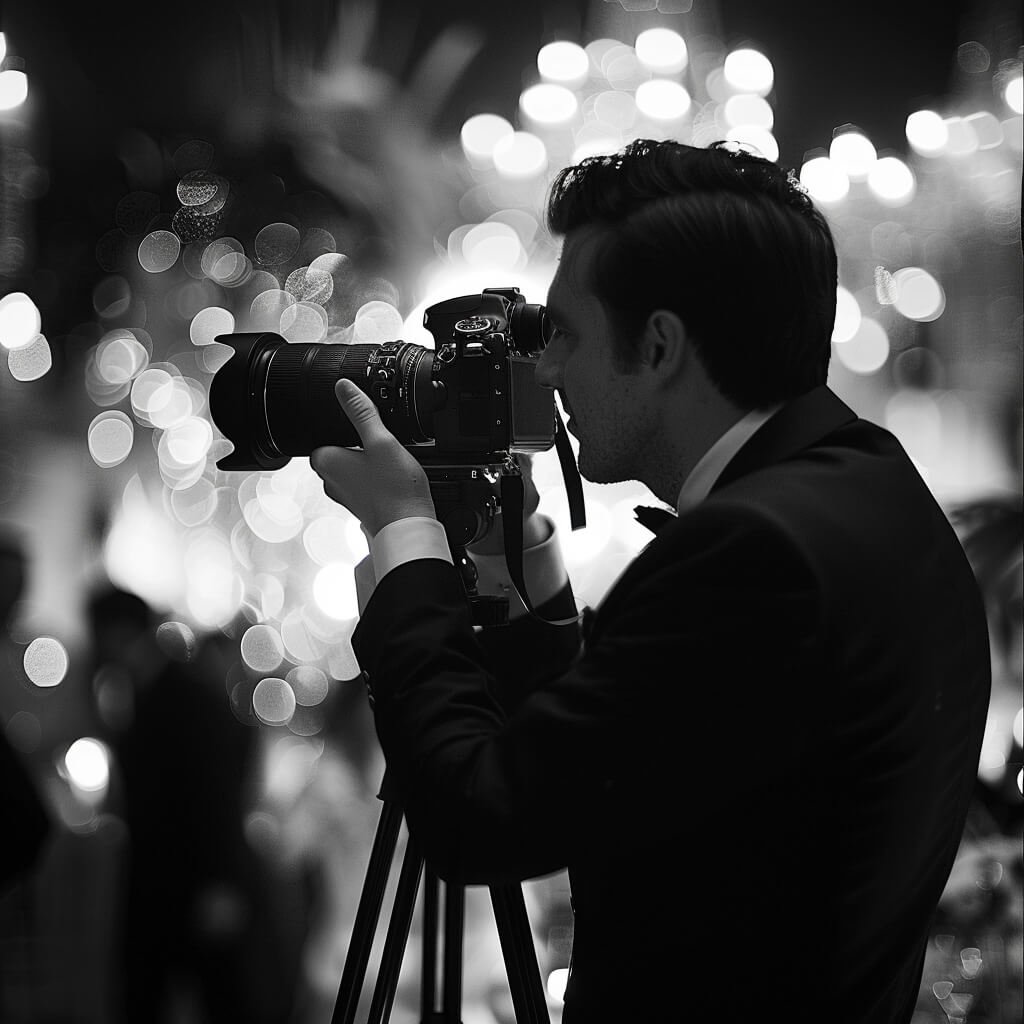
First, What is a Second Shooter?
Practically every wedding these days has a second shooter photographer. If you’ve been to a wedding in the past decade or so, you may have noticed a second photographer running around the bridal and groom. Or, maybe you’ve had a second photographer at your wedding.
The best way to explain what a second shooter is, is to understand the role is a photographer’s assistant. A wedding photographer can’t be two places as once, right? That’s why most professionals need a second photographer.
Understanding the Role of a Second Shooter
If you’ve been in the wedding photography business before, then you know that when a couple books a photography package, they’ll usually up-charge for a second wedding photographer. The photographer will usually have a list of vendors they work with, and with any luck, you’ll be on the photographer’s list.
The Photographer Timeline for the Wedding Day
One photographer simply isn’t enough to get the bride walking down the aisle and complete a variety of images of the entire wedding. Soon, you’ll see why. Now, let’s take you through a typical workday using one, from getting ready, to ceremony, to reception:
First, on the couple’s wedding day, the main photographer might be with the bride and bridal party getting ready, which the second photographer is with the groom and groomsmen. As the couple makes their way to the venue or for their first looks, the main shooter will photograph the bride in all her glory; her nerves, her tears of joy, and her look.
Being a second shooter was an unexpected milestone I didn’t realize was essential for my growth. It offered me a fresh perspective for observing, learning, and honing my photography skills in the whirlwind of emotions and beauty that defines weddings.
Meanwhile, the second shooter will be there waiting in the wings of the main photographer, and act almost like a ring-leader for the groom and his groomsmen, to ensure they’re on time, and not stumbling to the first-look, the family formals, or the ceremony.
During the ceremony, the second shooter will aim their camera at the lovely couple’s families, and the wedding party as they await the nuptials. The bride makes her way down the aisle as the lead photographer captures the main event.
Why Every Wedding Photographer Needs a Second Shooter
A second photographer at a wedding means that, while the couple pose for their portraits with the lead shooter, the assistant can take candids while the guests devour o’devours at the cocktail hour and pose for group shots. A second photographer can help ensure all the shots from the groom and bride’s shortlist end up in their gallery from the first look to the reception when the bridesmaids are shaking their tails on the dance floor.

The Importance of Second Photographers for the Wedding Day
If you had a second shooter at your wedding, you know they work their rumps off. You’re shooting behind the scenes and able to capture those moments the bride and groom don’t take a second to notice because they’re too busy.
You’re going to be, not just the photographer’s companion, but for the planner too, while the parts of the day go as planned. In most cases the main photographer will plan out the timeline for the planner to follow, making it crucial to find someone who can go above and beyond to ensure the day goes to a tee.
After the big day, the lead photographer will edit the photos (unless they ask you to edit your half), then they’ll package everything up and sen the final gallery to the honeymooners.
Learn How to Second Shoot
When you’re starting out as a photographer, you need to learn business skills to succeed. But working weddings is a whole other ballgame. Here are tips and tricks to doing your very first second shooter job:
Coverage from different angles and poses:
While the main photographer focuses on the primary shots, the second shooter provides coverage from alternative angles, offering a more comprehensive visual story.
Candid moments behind the scenes:
Second shooters are often tasked with capturing the raw, unscripted moments that whilst the wedding goes on. You, another photographer, will help the lead capture those moments that no one else would otherwise notice.
Capturing parts of the day the lead photographer might miss:
The second shooter can focus on details and surroundings that contribute to the story of the day. Rather than focusing on the couple, you’re in charge of capturing everything else around the wedding.
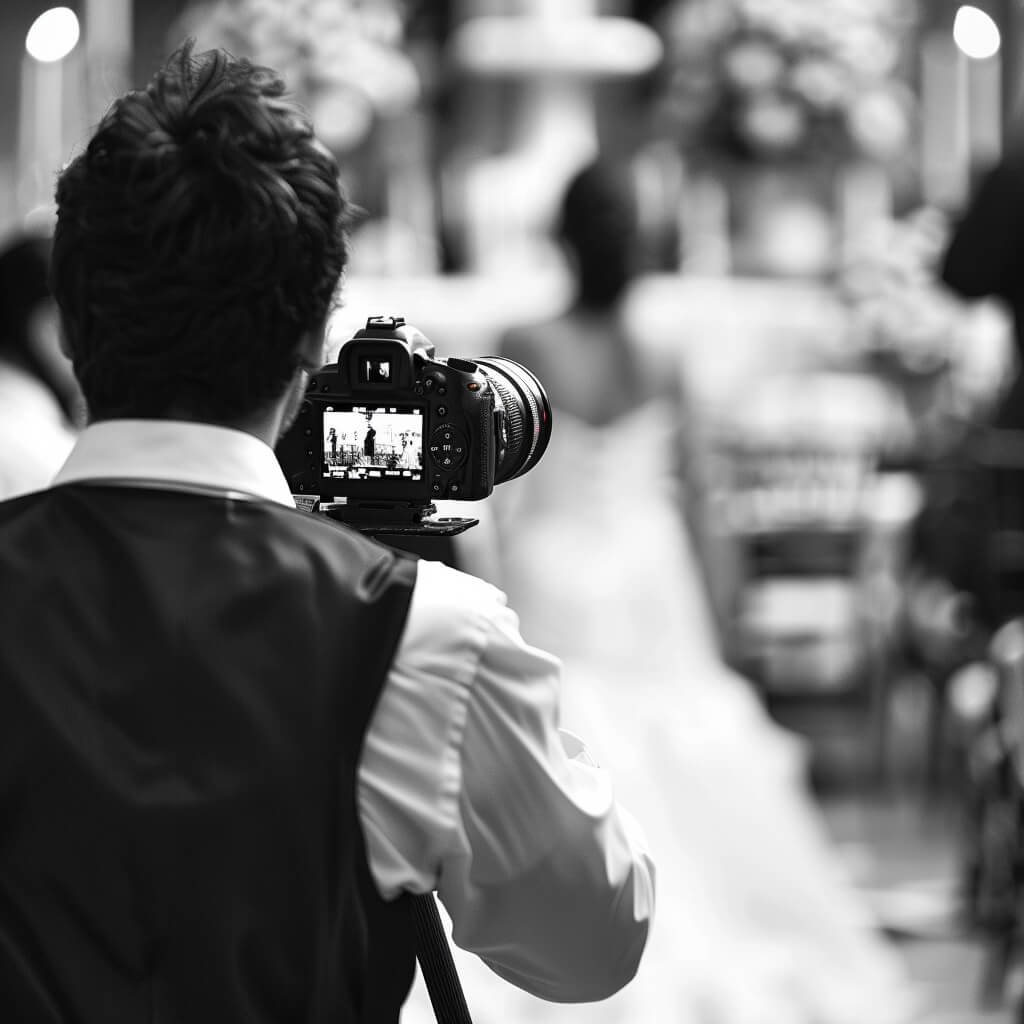
Photographer Education: How to Become a Second Photographer
Becoming a second shooter seems like a headache. But, once you have made connections and some experience, you’ll become the go-to for another photographer who is in need of an assistant.
Here are some ways to get yourself out there and comfortable shooting for a lead photographer:
Get educated in wedding photography:
Immerse yourself in photographer education courses on Udemy, Coursera, or the like while you build connections and learn the industry.
Build your portfolio—no matter how big or small it is:
As you continue assisting at weddings and other events, you’ll eventually have enough to build that lookbook of beautiful wedding. Just make sure to give the lead photographer credit.
Pro Tip: Post your photographs on social media—one of the ways to stand out and get asked to assist pros in your area. (Just make sure you share your location).
Network in wedding photography business pages:
Network on local Facebook groups where different photographers hang out and wedding planning groups, where you can offer assistance in exchange for building your portfolio. You can also look for wedding planners in need of vendors for a styled wedding shoot, where you can mix and mingle with other budding (and big) area photographers.
Try reaching out to another photographer:
Compile a spreadsheet of photographers you think you’d complement, building a spreadsheet with websites and email lists, to make the process easier, then get in touch and let them know you’re a budding photographer looking for a mentor. Reach out to your favorite local photographers on LinkedIn, Instagram, and other social networks to ask questions.
How to Successfully Get More Second Shooter Gigs
The relationship between the main photographer and the second shooter is crucial. It’s built on trust, communication, and mutual respect. Here are some ways to foster a successful partnership:
- Clear Communication: Discuss expectations, shot lists, and specific roles before the event. Understanding what’s expected of you as a second shooter is key to success.
- Adaptability: Be prepared to adjust your approach based on the dynamics of the event and the needs of the main photographer.
- Respect the Vision: Your role is to support and enhance the main photographer’s vision. Stay aligned with their style and preferences.
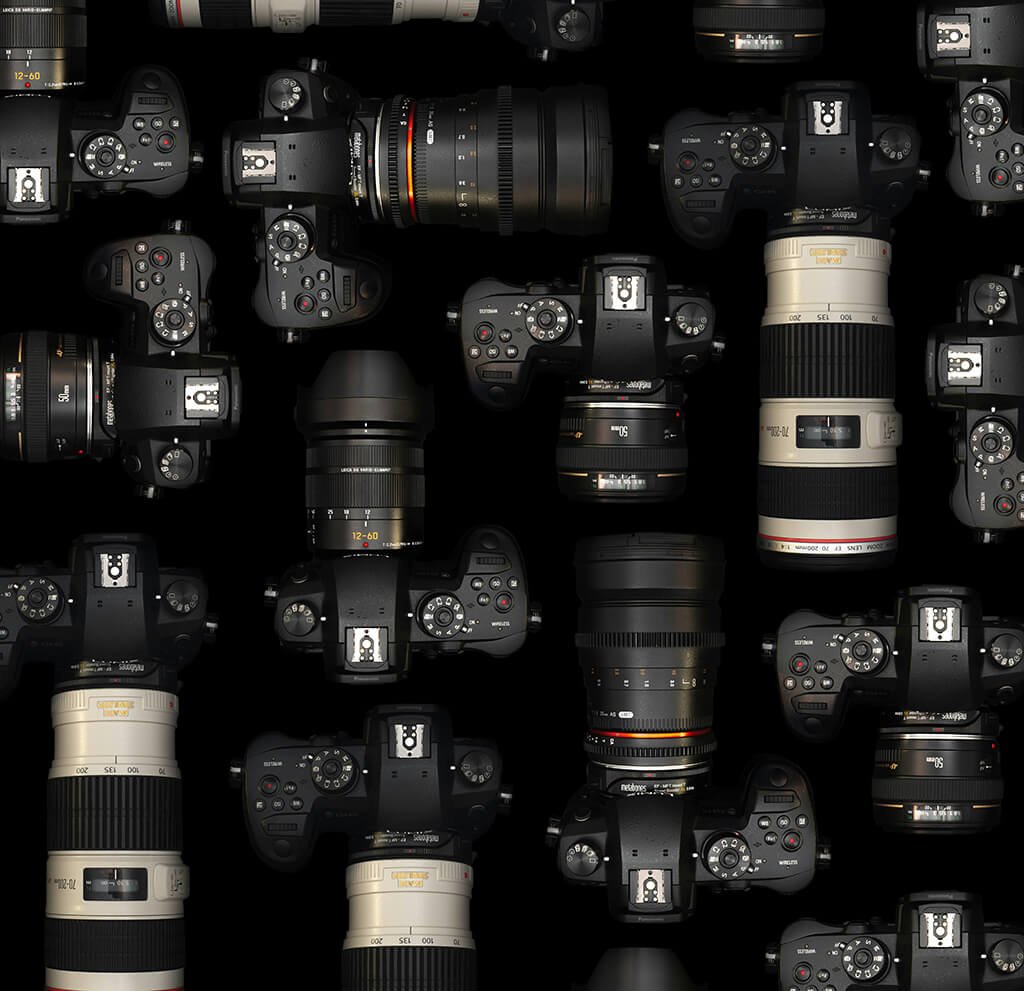
Essential Skills and Equipment
Success as a second shooter goes beyond just showing up with a camera. You never want to show up to a job unprepared. And you don’t want the photographer in a dilemma about who is going to step in last-minute. You need to evaluate your readiness to shoot in the wild. Here are some skills and tips for excelling at your job:
- Technical skills: You want to be fully comfortable with understanding your equipment, lighting, composition, and other technical aspects of photography before going out and getting business—let alone shooting an entire wedding.
- Anticipate special moments: Anything can happen at a wedding, but if you’ve been to enough, you know what to expect for the big day. Get ready to capture fleeting moments the couple doesn’t expect—like the smashing of the cake.
- People skills: You’ll build a rapor engaging with guests in a friendly and professional manner. It’s easy to show kindness and see friends and family smiling ear-to-ear from the kind professional behind the camera. Plus, it keeps the reputation of the main photographer in tact when Google, Yelp, and WeddingWire reviews are posted the moment the wedding ends.
Must-Have Equipment:
- Camera and Lenses: Have a reliable DSLR or mirrorless camera handy, along with a variety of lenses. It’s the best way to prepare for all wedding scenarios (like unexpected rain).
- Memory Cards and Batteries: Always have extra memory cards and fully charged batteries to ensure you’re 100 percent ready to go all day long.
- Backup Equipment: Having backup equipment can be a lifesaver in case your camera fails you, or a bridesmaid accidentally spills her drink. (Believe us—we’ve heard stories!)
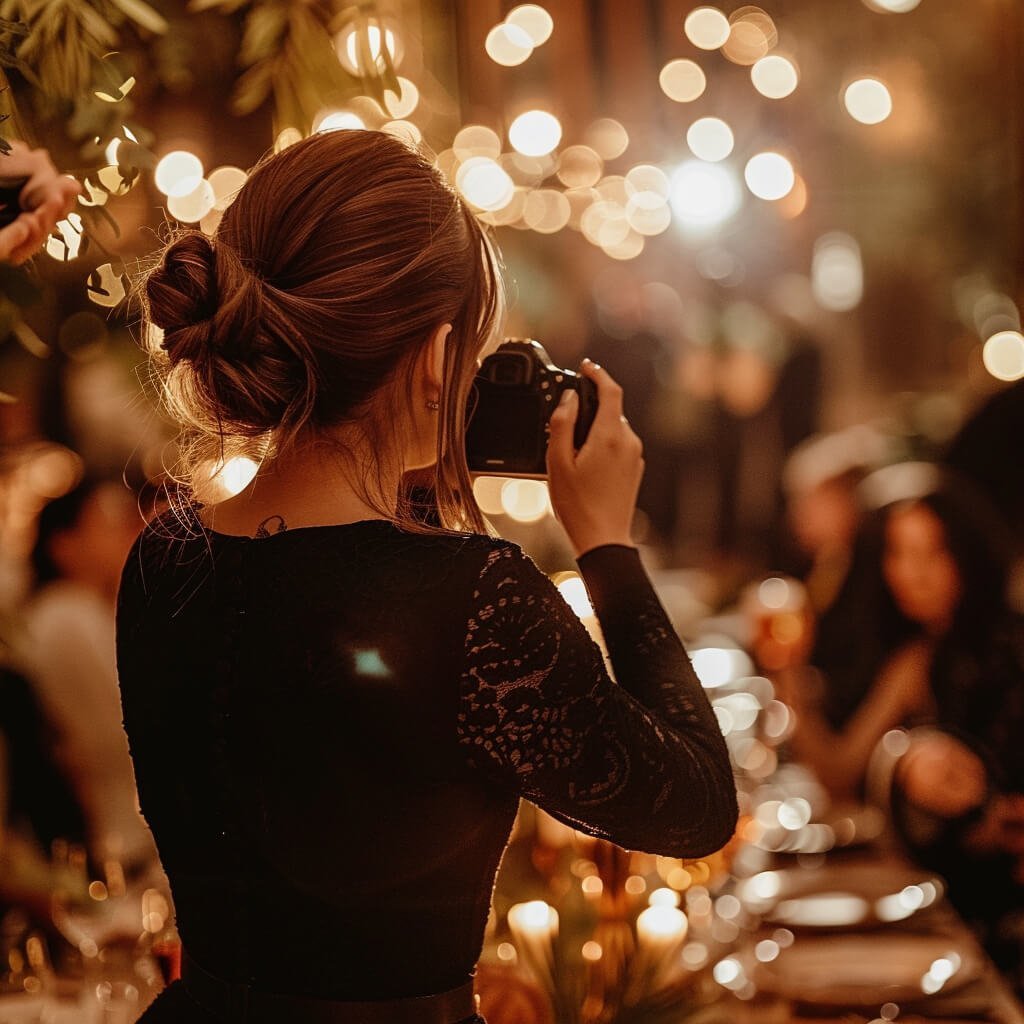
Tips for Excelling as a Second Shooter
- One of the ways is to know what positions the lead photographer uses. Ask questions about the shot list ahead of time to avoid getting in their shots and be mindful of your positioning
- Play around with unique perspectives. Use angles and compositions that capture the style of the special couple.
- Communicate with the main photographer with regular check-ins. That way, on the day, you’re aligned and capture a diverse range of shots.
- Learn and Reflect: Each wedding you shoot at is another opportunity to reflect on your work, seek feedback, and continuously improve your craft.
Advanced Strategies for Budding Wedding Photographers
- Master the art of stealth: The key is to remain in the background yet present. This will allow you to capture moments without disrupting the natural flow of the event—or take the attention from the bride. This skill will help you get candids the couple will rave about.
- Use your work as a case study: Build a diverse portfolio so your gig can act as a stepping stone to bigger opportunities—and eventually level you up to lead photographer.
- Networking and growing professionally: Working closely with experienced photographers means you have an opportunity to network, learn, and grow as a professional. Ask for feedback and advice to enhance your skills.
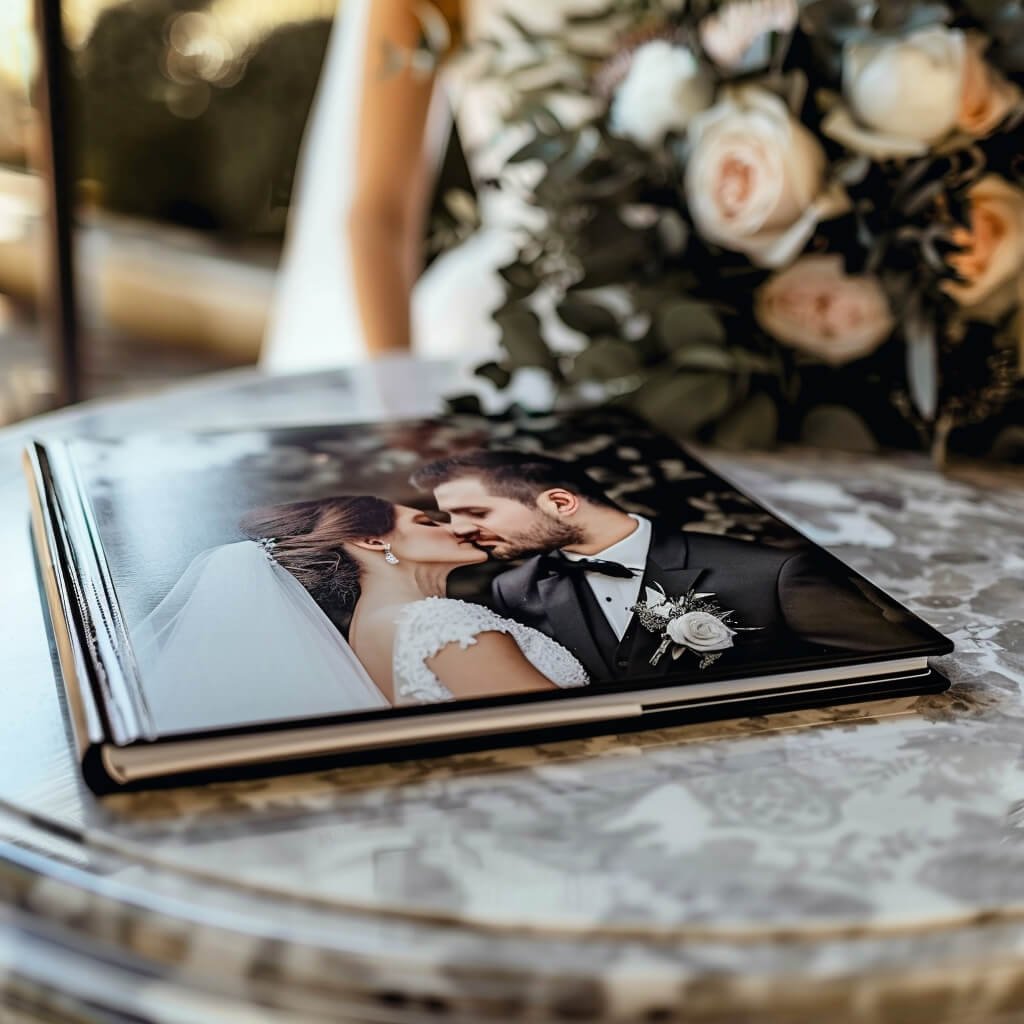
Delivering the Final Gallery of the Wedding Day
After the event, the second shooter’s job isn’t quite finished. Post-production significantly impact your chances of getting asked to shoot again:
- Be efficient with images: Organize and deliver your images to the head photographer quickly. Discuss beforehand the preferred format and method of delivery to keep the photographer happy with your work.
- Seeking Feedback: Request feedback on your performance and the image turnout. This shows your commitment to growing and how professional you are.
- Reflecting and improve: Take the time to reflect on the event, what you learned, and how you can improve to build your reputation.
Best Ethics and Compliance Practices
Ethics play a crucial role in photography, especially when working for someone else. Here’s what to keep in mind as you begin to pick up more work:
- Image credit and usage: Take time to read the fine print on your contact, understanding the image credit and usage stipulation. Usually, the images you capture as a second shooter typically belong to the main photographer. So, be sure to use your name appropriately).
- Be professional at all times: There will be moments that will frustrate you. Maintaining professionalism and respecting privacy is key to adhering to the ethical standards professionals—and people—set.
Conclusion: Your Guide to Becoming a Second Photographer
We hope these tips brought you clarity on how to put your best foot forward as a second shooter at weddings. Remember, assisting anyone isn’t easy. You need to understand your role as the second-in-command wedding photographer. Remember to be courteous, friendly, and prepared.
There’s no denying that once you have your first few events under your belt, you’ll be asked to help more. You will be on your way to becoming a full-fledged wedding photographer.
For more tips and tricks, and even some amazing photography equipment, check out all our other photography and camera-related content. Happy shooting!


